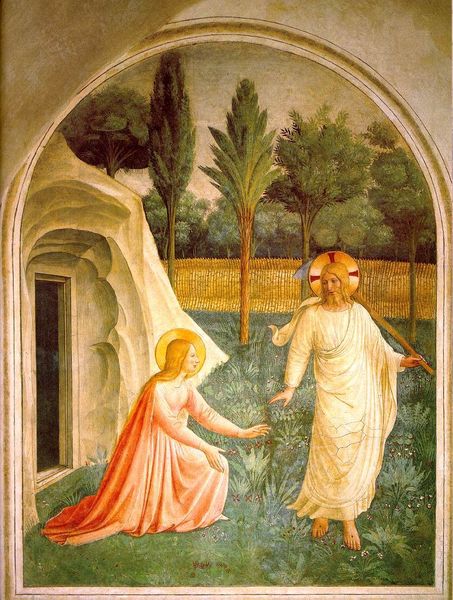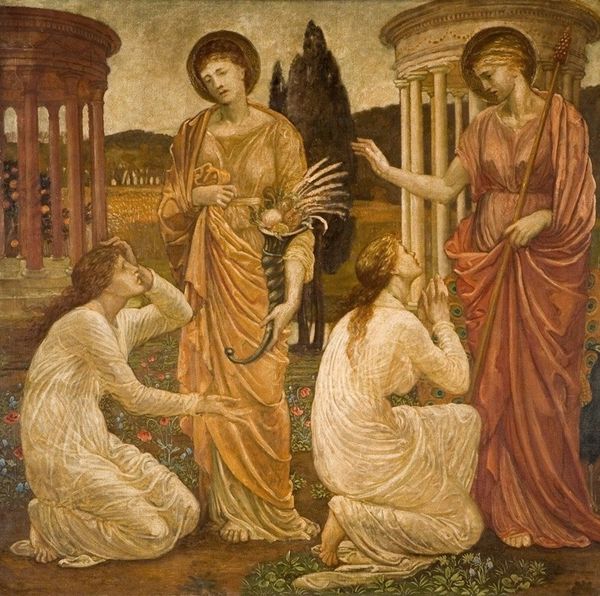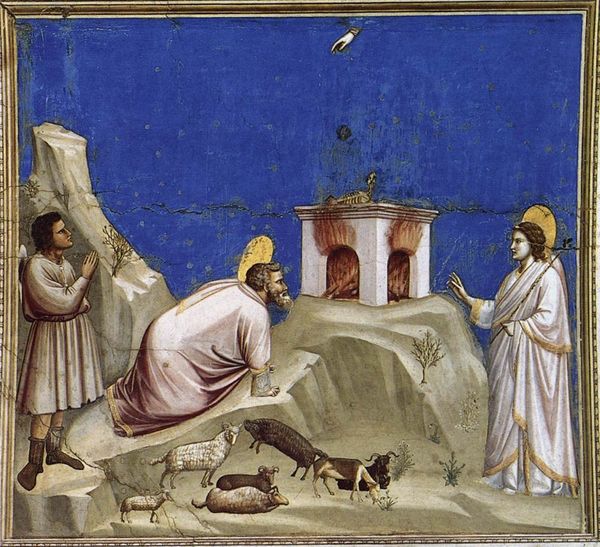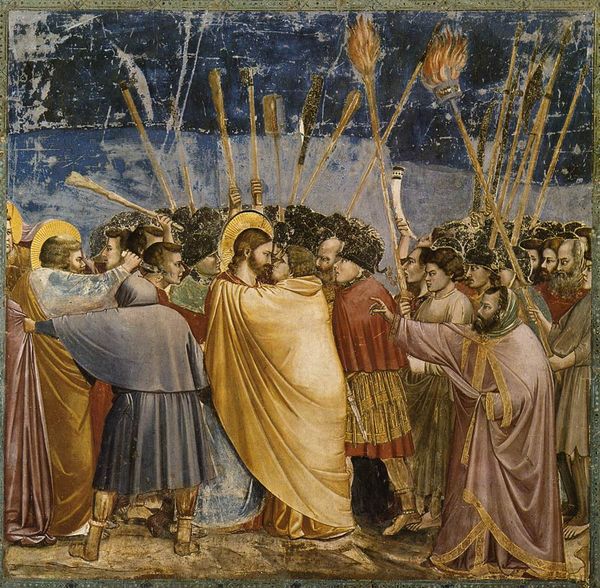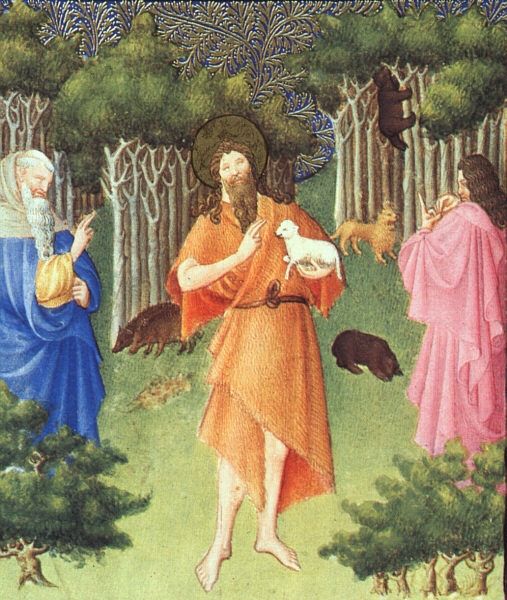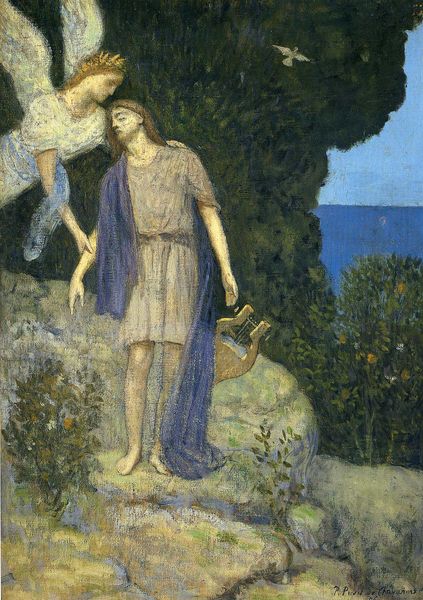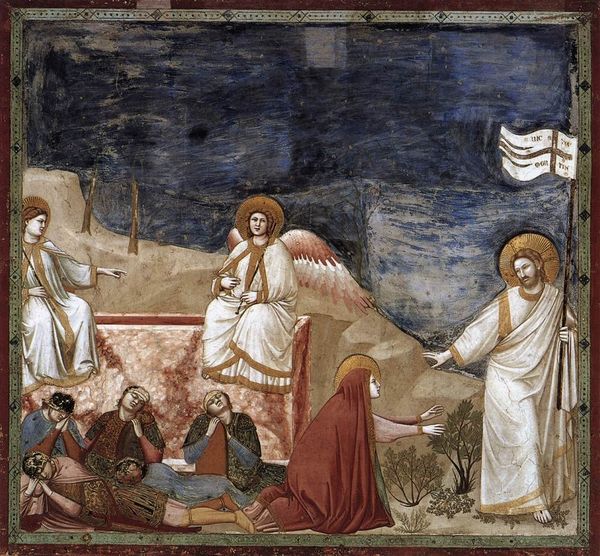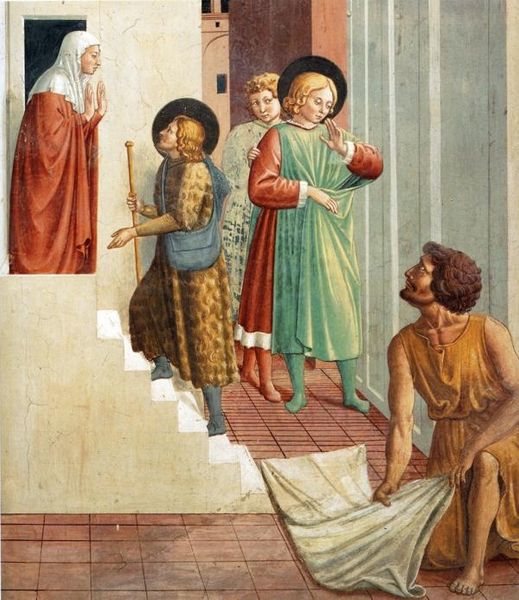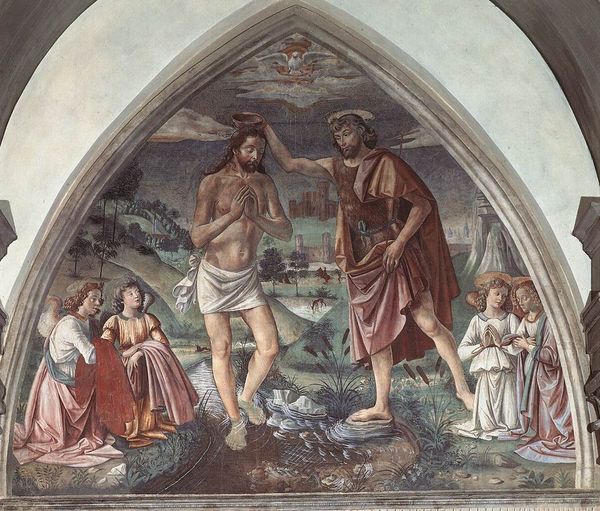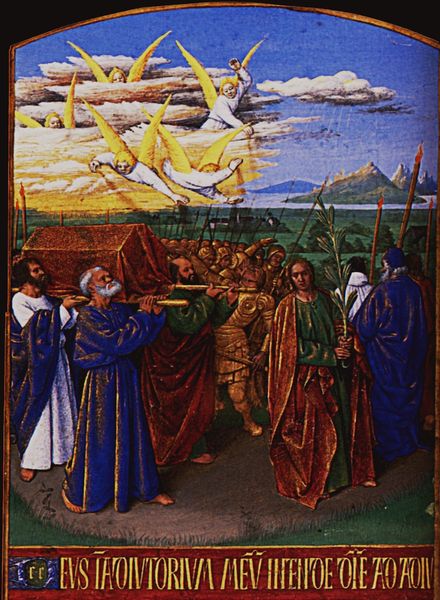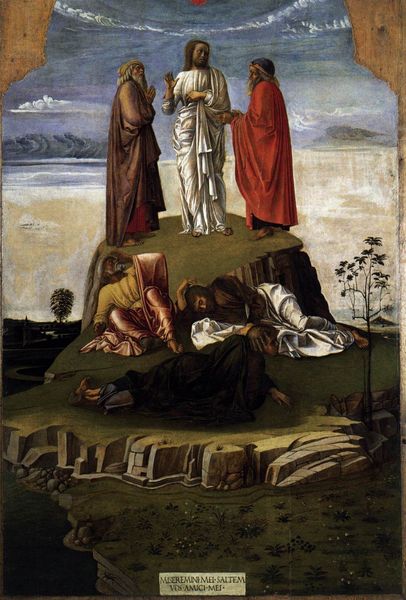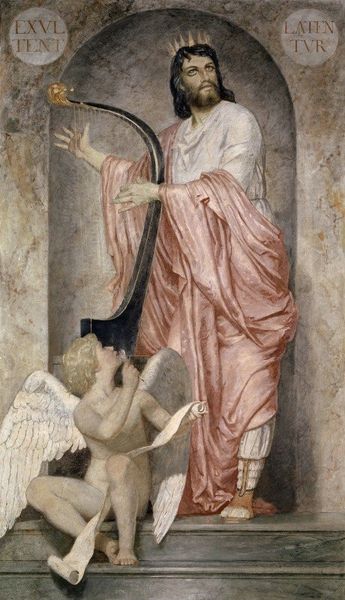
Copyright: Public domain
Here we see Pierre Puvis de Chavannes's depiction of "Homer: Epic Poetry," where the legendary poet sits, perhaps pondering his next verse. Note the laurel branches held aloft by the figures flanking him. The laurel is a potent symbol, deeply entwined with both Apollo, god of music and poetry, and the concept of triumph. In ancient Greece, victors in the Pythian Games, dedicated to Apollo, were crowned with laurel wreaths, a tradition echoed in Roman triumphs. Now, consider how this motif resurfaces in Renaissance art, adorning portraits of poets and scholars, signifying their intellectual achievements. But the laurel's journey doesn't end there. Its association with victory and honor transcends time, appearing in coats of arms and academic regalia, each time subtly shifting in meaning. This emblem isn't static; it evolves, adapts, yet always carries a whisper of its ancient origins. It evokes an emotional connection to tradition and timeless human aspirations.
Comments
No comments
Be the first to comment and join the conversation on the ultimate creative platform.
